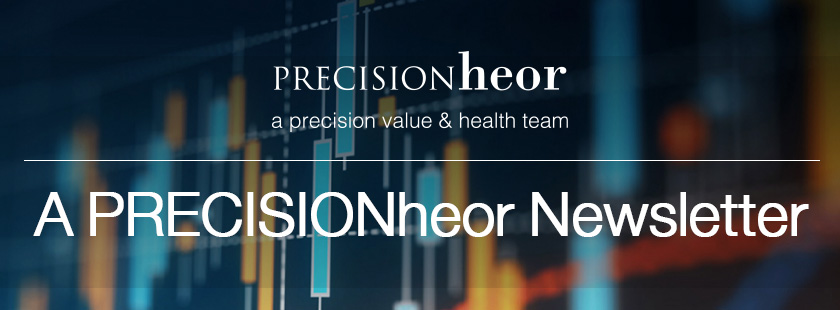—
In this edition’s Q&A, we sit down with Larry Blandford, PharmD, Executive Vice President and Managing Partner, to discuss his work.
As you’ve been engaging with emerging companies over the past several months, what have you observed about their interest and use of HEOR?
First, I’d say that emerging biopharma companies have small teams that are juggling many diverse responsibilities. Many times, this is the first product the company is commercializing themselves so simply building out the structure and hiring team members is a significant part of their time. Their ability to make investments in hiring personnel and partners is more tightly tied to the release of clinical trial data, so planning activities needs to take those milestones into account. Once they are set on commercialization, it’s usually a mad dash to launch especially since they have secured some type of accelerated approval. Thus, I do see them valuing partners who can help both execute and coordinate multiple services on their behalf.
That said, developing the economic story is becoming one of the first commercial activities to consider. Usually, that’s due to the product entering a competitive market or it’s for a rare condition for which they feel the need to have some justification for their eventual pricing decisions. Thus, assessing the evidence to support the product’s value story and beginning to construct an economic model are important and can serve as the foundation for health technology assessment submissions or external value assessments (such as ICER). My belief is that these companies see HEOR as a key component of their commercialization strategy and foresee that to continue as the broader system continues to focus on value-based care.
You mentioned these companies valuing partners who can support multiple services. What other services within Precision do you see as coordinated with HEOR in these situations?
It has varied by the customer since their needs can vary by therapeutic area, product situation, and where they already have trusted partners. First, as noted earlier, the economic evidence is a key component of a product’s value story, so collaboration with our global pricing, market access and analytics team in early value message development and testing, as well as Precision for Value for both payer expertise and communication planning, has proven to be valuable to our clients. These oftentimes can lead to incorporating the HEOR outputs into payer communications, such as budget impact model tools, and real-world evidence (including those governed by healthcare economic information [HCEI], historically known as FDAMA 114). We’ve also had several situations where there is a direct link to HEOR and the strategic medical communications activities, in which our team at ETHOS specializes.. Both are often led and purchased within the medical team and have similar elements such as publications and congress/conference planning. Lastly, we’ve started to explore a couple of situations to more closely incorporate the economic evidence with investor communications to support the necessary capital needed for commercialization activities.
In what ways do you think we may evolve to support these customers?
For now, the capital markets continue to see emerging biotechs as good bets. As long as they continue to receive capital, I see more deciding to commercialize on their own versus outsource and be acquired by mid to large pharma, especially in rare diseases and low market competition. To support this activity, I believe we’ll continue to evolve our offerings in ways that combine multiple services in more valuable and efficient ways. For example, we recently completed work for a gene therapy customer where we executed the evidence assessment and economic model in parallel with the early value story development. Instead of each team doing their own landscape assessment and workshop, those tasks were combined into one that served both purposes. In addition to saving time for the client and ourselves, we elevated our position as a partner across multiple contacts. That’s led to follow-on projects that have been initiated and several others in discussion. These do require a bit more work for the coordination between internal teams, so accounting for bandwidth and different work styles is important. That said, the experience of seeing how the pieces all work together and are valued by a customer can be very rewarding!
In the future, I believe we’ll see these types of biopharma innovators favor working with entities that can execute and coordinate across multiple service areas. It minimizes the effort to manage multiple vendors, better leverages the learning and efficiencies that come with stacking multiple activities together. Curative therapies in particular will have needs for evidence assessment for multiple constituents including payers, HTA authorities, and policy makers. The challenge is they won’t be the same needs each time, so the openness to problem-solve and collaborate internally will be key to being a bigger part of the solution for these customers and, eventually, the patients for whom the treatments can change their lives.
Enjoy this? Read Larry’s recent commentary in Knect365, Validating effectiveness and payment for single treatment gene therapies or set up time with Larry at ISPOR Copenhagen!


